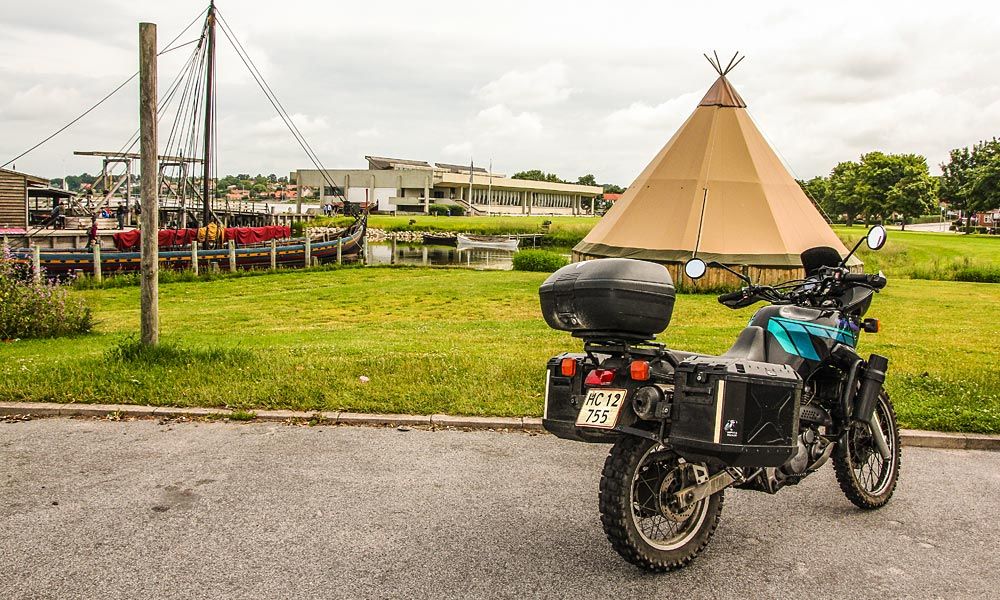ETR // Stage 28 // Hanstholm - Esbjerg
-
57°07'13.9"N 8°37'04.4"E
-
57.120540, 8.617899
-
Hanstholm - Esbjerg
Distance
-
Hanstholm - Esbjerg
-
Radius 100 km
-
228 km
Highlights
-
The Atlantic Wall
-
Bunkermuseum Hanstholm
-
Bunkers at Vigsø
-
North Sea Coast
-
Thybørøn
-
Ringkøbing
-
Rindum Village
-
Tirpiz Bunker Museum
-
Tirpitz Battery
-
Man by the Sea
-
Esbjerg Center


The Atlantic Wall
Carving through this beautiful landscape, The Atlantic Wall, an extensive system of coastal fortifications was built between 1942 and 1944 by the German Third Reich to defend against an anticipated Allied invasion of mainland Europe.
Nearly half the length of the ETR, it stretches over 5,000km along the western coast of Europe from the top of Norway down to the top of Spain. The defences and ramparts consist of many different types of concrete fortifications, from ammunition bunkers, to gun emplacements, to supply depots and submarine stations.
Over the years, we have visited all of the sites along the entire length of the Atlantic Wall, and some of the highest concentrations of fortifications can be found on the west coast of Denmark at Thybørøn, Hanstholm and Vigsø.



Operation Weserübung
To the Germans, Denmark was of vital strategic and tactical importance, and on the 9th of April 1940, “Operation Weserübung” the German invasion of Denmark was set in motion, even though it was in direct violation of a German–Danish treaty of non-aggression, signed the previous year. The subsequent 5-year Nazi occupation of Denmark provided the Wehrmacht with unhindered logistical access to Norway, and control over the entrance to the Baltic Sea, as well as control over most of the North Sea coast.



Thybørøn, Ringkøbing, Rindum & Tirpiz Bunker Museum
Heading south along the wide beaches lining the Danish west coast, visit the bunkers at Thybørøn before you arrive at Ringkøbing. Already in the 11th century, a church was built in the small village of Rindum, which is even older, with proof of settlements dating back to the 6th century. From there, head south and visit Tirpiz Bunker Museum & Tirpitz Battery. The old Tirpitz Bunker contains the story of Hitlers gigantic bunker project: the Atlantic Wall.
In August 1944, the German occupying power set about building the huge Tirpitz Battery near Blåvand. The two huge gun bunkers were part of the Atlantic Wall and were intended to defend the entrance to Esbjerg, but the war ended before the bunkers were completed. Since then they have represented cold evidence of the war in the very heart of the magnificent dune landscape.
Photos
-
Dave O'Byrne
-
European Touring Route AS
Partners


Man by the Sea, staring out over Esbjerg
At Sædding Strand north of Esbjerg you will find Man by the Sea, a sculpture by Svend Wiig Hansen, which was created in connection with the 100th anniversary of Esbjerg in 1994 and has since become an international landmark for the city. The sculpture rises 9 meters into the air and can be seen from up to 10 kilometers out in the ocean, and depicts four white men in a row looking out over the sea, similar to the monoliths on Easter Island.
After a long day on the road with many new impressions, facts, photos and you find your cameras are just getting heavier, you can look forward to a nice evening in Esbjerg, where you can find whatever you are looking for.



Concrete resilience over time
German occupation lasted until May, 1945, and even now, 60 years later, the bunkers are still there, and have proved to be are extremely resilient, even though the ocean tides, storms and sands have been hammering them brutally over the years. This interaction creates an interesting composition between history and the forces of nature. Military architecture is intended to be as invisible as possible, which means its integration with nature is very well planned. Today, in contradiction, the bunkers along the Atlantic Wall are even more visible, after 60 years of fighting with nature.
































































































































